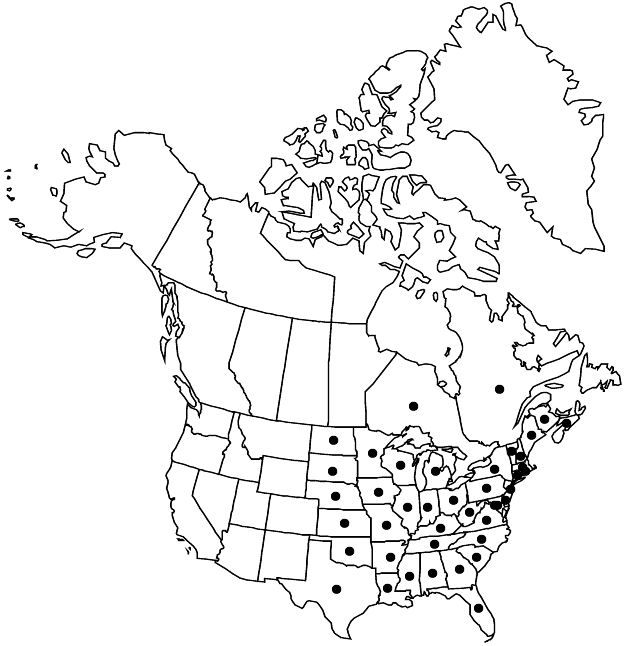Difference between revisions of "Acalypha rhomboidea"
New Fl. 1: 45. 1836.
FNA>Volume Importer |
imported>Volume Importer |
||
| (5 intermediate revisions by 2 users not shown) | |||
| Line 13: | Line 13: | ||
}}{{Treatment/ID/Special_status | }}{{Treatment/ID/Special_status | ||
|code=F | |code=F | ||
| − | |label= | + | |label=Illustrated |
}}{{Treatment/ID/Special_status | }}{{Treatment/ID/Special_status | ||
|code=E | |code=E | ||
| Line 22: | Line 22: | ||
|name=Acalypha virginica var. rhomboidea | |name=Acalypha virginica var. rhomboidea | ||
|authority=(Rafinesque) Cooperrider | |authority=(Rafinesque) Cooperrider | ||
| + | |rank=variety | ||
}} | }} | ||
|hierarchy=Euphorbiaceae;Acalypha;Acalypha rhomboidea | |hierarchy=Euphorbiaceae;Acalypha;Acalypha rhomboidea | ||
| Line 47: | Line 48: | ||
-->{{#Taxon: | -->{{#Taxon: | ||
name=Acalypha rhomboidea | name=Acalypha rhomboidea | ||
| − | |||
|authority=Rafinesque | |authority=Rafinesque | ||
|rank=species | |rank=species | ||
| Line 61: | Line 61: | ||
|publication title=New Fl. | |publication title=New Fl. | ||
|publication year=1836 | |publication year=1836 | ||
| − | |special status=Weedy; | + | |special status=Weedy;Illustrated;Endemic |
| − | |source xml=https:// | + | |source xml=https://bitbucket.org/aafc-mbb/fna-data-curation/src/2e0870ddd59836b60bcf96646a41e87ea5a5943a/coarse_grained_fna_xml/V12/V12_297.xml |
|genus=Acalypha | |genus=Acalypha | ||
|species=Acalypha rhomboidea | |species=Acalypha rhomboidea | ||
Latest revision as of 19:14, 5 November 2020
Herbs, annual, 1.5–6 dm, monoecious. Stems usually erect, sometimes ascending, usually sparsely pubescent, rarely sparsely hirsute. Leaves: petiole 0.4–7 cm; blade ovate to broadly rhombic, 2–9 × 0.8–5 cm, base obtuse, margins crenate to serrate, apex acute to acuminate. Inflorescences bisexual, axillary; peduncle 0.1–0.6 cm, pistillate portion 0.7–1.5(–2) × 1–2(–2.5) cm or pistillate bract solitary, staminate portion 0.3–1 cm; allomorphic pistillate flowers rare, solitary in axils near base of stem. Pistillate bracts (normal flowers) loosely arranged to crowded (inflorescence axis clearly to scarcely visible between bracts) or solitary, 6–15 × 9–23 mm, abaxial surface sparsely pubescent and stipitate-glandular; lobes (5–)7–9(–11), lanceolate to triangular, 1/3–2/3 bract length; bracts of allomorphic flowers absent. Pedicels of allomorphic flowers 1–2 mm. Pistillate flowers: pistil 3-carpellate (normal flowers), 1-carpellate (allomorphic flowers); styles multifid or laciniate. Capsules smooth, pubescent; allomorphic fruits obovoid, 2 × 1 mm, spiny, pubescent. Seeds (1.2–)1.5–1.7(–2) mm, minutely pitted.
Phenology: Flowering and fruiting summer–fall.
Habitat: Deciduous and evergreen woods, moist depressions, swampy areas, riverbanks, agricultural fields, disturbed areas.
Elevation: 0–1500 m.
Distribution

N.B., N.S., Ont., Que., Ala., Ark., Conn., Del., D.C., Fla., Ga., Ill., Ind., Iowa, Kans., Ky., La., Maine, Md., Mass., Mich., Minn., Miss., Mo., Nebr., N.H., N.J., N.Y., N.C., N.Dak., Ohio, Okla., Pa., R.I., S.C., S.Dak., Tenn., Tex., Vt., Va., W.Va., Wis.
Discussion
Acalypha rhomboidea often has been called A. virginica due to controversy about the typification of that name. Conservation of the type of A. virginica resolved the issue. This nomenclatural problem, combined with use of inappropriate characters to distinguish A. rhomboidea and A. virginica, has resulted in considerable confusion between these amply distinct species. The two can be distinguished most readily by the pistillate bracts, which are clearly hirsute abaxially in A. virginica but sparsely pubescent abaxially in A. rhomboidea. In addition, the bracts of A. virginica have (8–)10–14(–16) triangular lobes one fourth to one half the bract length, whereas those of A. rhomboidea have (5–)7–9(–11) lanceolate or triangular lobes one third to two thirds the bract length, and the stems of A. virginica usually are hirsute whereas the stems of A. rhomboidea are rarely so.
In the southern part of its range, many Acalypha rhomboidea plants have been confused with A. gracilens. These plants are more delicate than A. rhomboidea from farther north, with notably smaller pistillate bracts, and they usually produce allomorphic flowers, whereas more robust or northerly plants rarely do. They can be distinguished from A. gracilens by having relatively wider leaves and pistillate bracts with fewer lobes and no red sessile glands.
Selected References
None.
